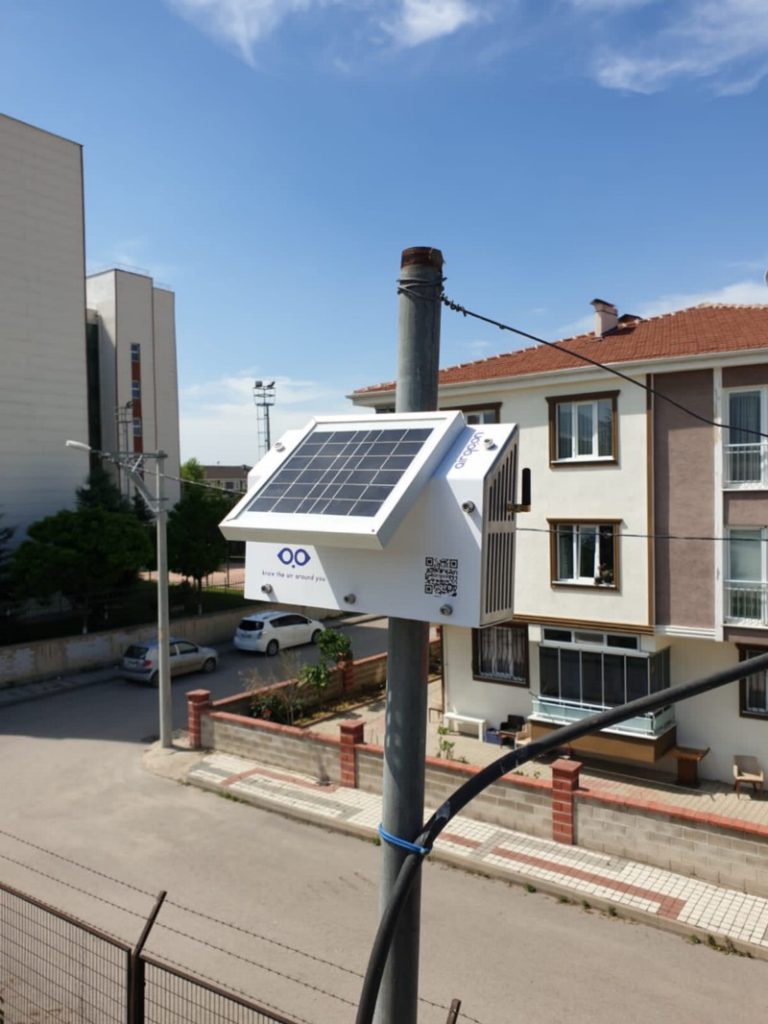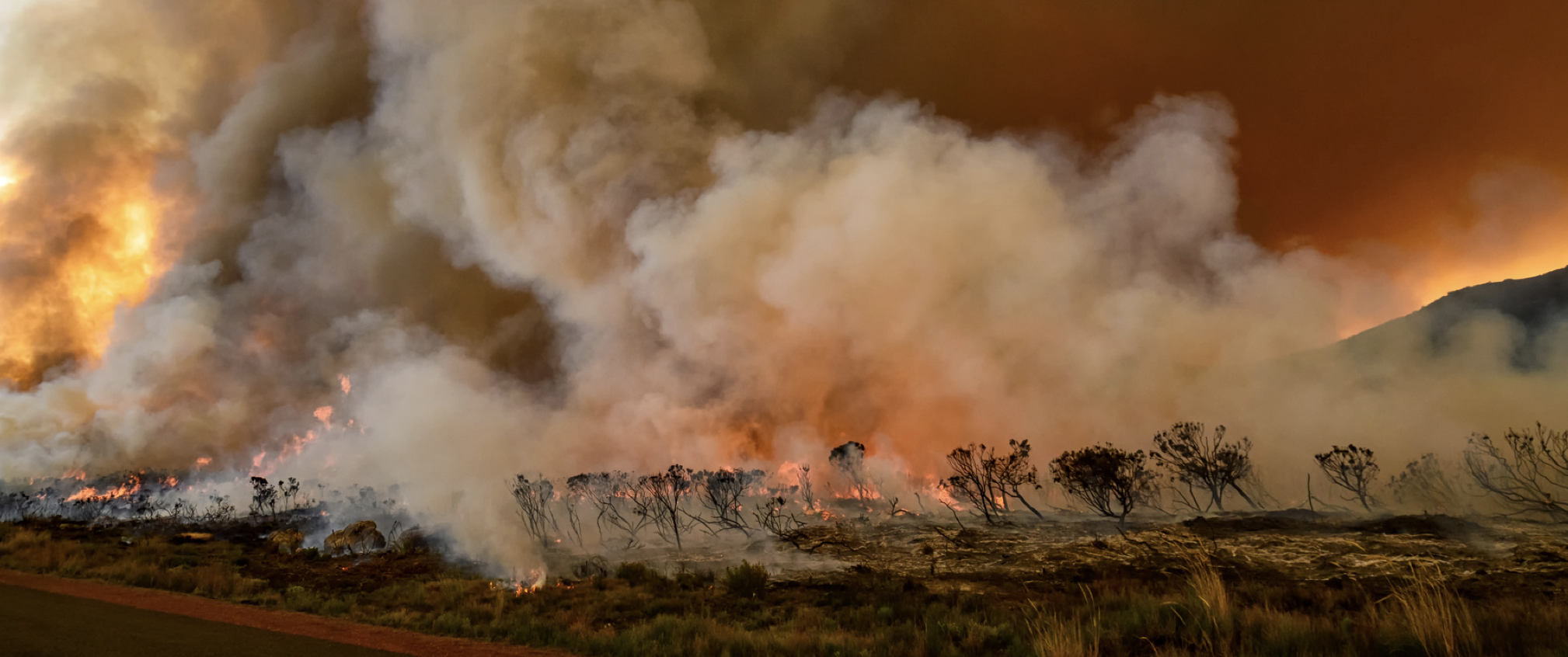
Environmental problems are global problems. Almost every person living on earth has the potential to be affected by the adverse environmental effects of other human activities, independent of their ecological footprint. Air pollution is one of the critical environmental problems that needs global attention. Air pollution cannot be considered a local problem. It has the potential to affect other regions with the prevailing wind. As recent research presented, it is a fact that DDT (dichloro-diphenyl-trichloroethane) accumulates in the fat layers of wild animals living in the poles where the pollution crosses the border (Orhan, 2012). Industrial air pollution is also at the top of environmental pollution.
An air pollution management structure needs to be defined to mitigate the adverse effects of air pollution on the environment and human health. Since air pollution is transboundary environmental pollution, solutions should be considered on a global scale rather than a regional one. The first effort was carried out at the Stockholm Conference in 1972. Following the Stockholm Conference, the OECD established a research and monitoring program to examine the effects of transboundary air pollution (Orhan, 2012). “Initiated due to the public outcry against the detrimental impacts of Acid Rain in Europe, the Convention on Long-range Transboundary Air Pollution (CLRTAP) was signed in 1979 and entered into force in 1983. CLRTAP has successfully reduced key harmful pollutants in Europe and North America as the first regional environmental convention. Over the past 30 years, the Convention has been extended by 8 Protocols, focused upon setting strict reduction targets for releases of pollution for the protection of human and environmental health” ( URL 1). With this convention, countries must reduce pollutant concentrations at local and cross-border scales and take necessary measures.

The first protocol of the Convention, also known as the Financial Protocol, EMEP was signed on 3 October 1984 and entered into force on 28 January 1988. With this protocol, it is necessary to monitor and evaluate air pollution. In recent studies, exposure to air pollution is known to cause 7 million premature deaths each year (WHO, 2021). 4.2 million of these deaths are caused by outdoor air pollution from industry, traffic, and heating; 3.8 million are due to diseases and deaths due to indoor pollution caused by fuels burned inside the house for cooking and heating (Right to Clean Air Platform, 2021). Thus, states have already established their own air monitoring networks and do good air quality management.
Turkey’s first legal regulation in the air quality process is the Air Quality Control Regulation, which came into force in 1986. In this regulation, limit values are given to protect from the harmful effects of pollutant concentrations. However, measurement and monitoring of pollutant sources are not included. Between 1986 and 2004, air quality measurements were carried out based on SO2 and PM10 pollutant parameters with semi-automatic systems. An automatic system was started with 8 online air quality monitoring systems established in Ankara in 2004. The National Air Quality Monitoring Network (UHKIA) was established by spreading the air quality monitoring stations and monitoring network across the country, based in 81 provinces in 2005–2007 (T.R. Ministry of Environment, Urbanization and Climate Change, 2017). Currently, there are 339 air quality monitoring stations (URL 2).

Environmental regulations have been limiting the negative effects of these industrial activities on human health and the environment for many years. To comply with the European Union’s directives 96/62/EC, 99/30/EC, 2000/69/EC, 2002/3/EC, and 2004/107/EC, the Air Quality Assessment and Management Regulation came into force in 2008. It aims to prevent the negative effects of air pollution on human and environmental health, protect the current situation of areas with good air quality, and inform the public with warning thresholds. In the given regulation, principles and criteria regarding the installation sites of the air quality stations are defined, and there are groupings according to the area and source types (T.R. Ministry of Environment, Urbanization and Climate Change, 2008).

Regulations on the control of emissions according to source types have been published. One of these regulations is the Regulation on Control of Industrial Air Pollution, which entered into force in 2009. “The purpose of this regulation is to control emissions in the form of soot, smoke, dust, gas, steam, and aerosols emitted to the atmosphere as a result of the activities of industrial and power generation facilities. It is to protect people and environment from dangers that may arise from environmental pollution” (T.R. Ministry of Environment, Urbanization and Climate Change, 2009).
The Air Quality Assessment and Management Regulation states that to evaluate pollutant concentrations, air quality should represent an area of at least 250m x 250m. When contributions from industrial sources are to be assessed, at least one sampling point should be located downwind of 3the source in the nearest residential area. When the concentration is unknown, an additional sampling point should be placed in the prevailing wind direction (T.R. Ministry of Environment, Urbanization and Climate Change, 2008).
In the Industrial Air Pollution Control Regulation, businesses that emit harmful gases into the atmosphere are covered by the Regulation on Permits and Licenses Required by the Environmental Law (Energy Industry, Mining, and Construction Materials Industry, Metal Industry, Chemical and Petrochemical Industry, Surface Coating Industry, Forest Products, and Cellulose Facilities, Food Industry, Agriculture and Livestock, Waste Management, Storage, Filling and Unloading of Materials). This company must obtain an environmental permit for its establishment and operation. Evaluation of emissions arising from these enterprises, works, and procedures are carried out according to this regulation’s provisions and limit values (T.R. Ministry of Environment, Urbanization and Climate Change, 2009).
“While deciding to make continuous measurements by the competent authority, a request may be made that these measurements be conducted continuously with measuring instruments with recording capabilities. In addition, if deemed necessary, the competent authority may request the operator install equipment that allows online monitoring of these measurements. In critical areas or areas with high pollution load in terms of air quality and where there is a possibility of pollution, the competent authority may request continuous emission measurements from the enterprises subject to permission, if deemed necessary. Measuring devices and methods are determined by Turkish Standards, DIN, EPA, or CEN norms.” (T.R. Ministry of Environment, Urbanization and Climate Change, 2009).
These measurements can be grouped according to their duration, Periodic and continuous measurements. Periodic measurements are made with passive and semi-automatic devices. Due to its nature, these measurements are not straight; thus, pollution episodes and trends cannot be captured. In addition, it introduces maintenance and operation overhead while repeating this process to monitor air pollution in industrial facilities. Continuous measurements are made via devices that have recording capabilities These measurements have better resolution and provide minute or even instantaneous readings. Trends can be captured by tracking changes over time. It requires more cost than a periodic measurement (URL 3). The enterprises cover the prices of measures required by the legislation. Due to the increasing cost, sizes cannot be scaled sufficiently to cover a whole facility.
Low-cost, cloud-supported new, generation air pollution monitoring sensors comparable to the regulatory measurements are now used in many parts of Europe and America. They are capable of satisfying the needs of the facilities. In this direction, continuous sensor measurements can create a high-resolution Spatio-temporal pollution map. A healthy environmental monitoring system can be established with intelligent data correction and calibration processes. With this system, invisible pollution sources can be determined.

Turkey was left quite behind in Europe in terms of environmental monitoring systems as well as legislation. The standards in Turkey are not compatible with those of the European Union. For example, criteria specified in the European Union’s Best Available Techniques for Large Combustion Plants Document, which came into force in August 2021, are incompatible with our legislation’s standards. For a lignite-based fluidized bed thermal power plant in operation with a capacity of 2×250 MWe, the limit value allowed in our country is 1.3 times higher for NOx than the limit values in the EU; SO2 value is 2 to 20 times, dust is 5 to 25 times more (Right to Clean Air Platform, 2021). With the reduction of coal use, one of the decisions taken at the COP26 summit, Turkey needs new current legislation.
The industry is an important part of the Turkish economy. According to TURKSTAT, it accounted for 19% of the gross domestic product (GDP) in 2019 (TURKSTAT, 2019). Industry accounts for more than half of the total emissions and other important environmental impacts, including the release of pollutants to air, water, and soil, waste generation, and energy consumption. Air pollution is often associated with the burning of fossil fuels. This is true for power plants and many other industrial activities where electricity or heat can be produced on-site, such as iron, steel, or cement. While some activities make dust that contributes to the concentration of particulate matter in the air; for example, using solvents in metalworking or chemical manufacturing can lead to polluting emissions of organic compounds ( European Environment Agency, 2021).
According to the Black Report 2021 published by the Right to Clean Air Platform, it has been determined that the air quality is not measured sufficiently (90% and above) specified in the legislation, especially in some districts with industrial facilities. Considering the locations of the air quality measurement stations belonging to the Ministry, it is seen that most of the coal power plants in operation do not have a sulfur dioxide measurement station, which is an industrial pollutant (Right to Clean Air Platform, 2021). Turkey’s lack of a defined limit value for fine particles (PM2.5) is also a significant problem.
Increasing the public’s access to environmental information is one of the significant responsibilities of the state. It is necessary to ensure that citizens and stakeholders learn about pollution in every corner of Turkey. For this reason, it is essential to develop a monitoring system in order to follow the historical data on the release and transport of pollutants in industrial facilities with air emissions in a transparent manner.
The European Pollutant Emissions and Transport Register (E-PRTR) was created in 2006 to provide and track publicly available information on chemicals and pollutants released into the air, water, and soil. It covers more than 34,000 facilities in 33 European countries. E-PRTR data is available on the website and archives historical information on releasing and transporting 91 pollutants in 65 economic activities ( European Environment Agency, 2021). In Turkey, there is no legal framework necessary to establish this system. This situation weakens many environmental security policies. The transposition and implementation of the E-PRTR system should be allowed by setting the necessary regulation. Information on chemical accidents must be publicly accessible (OECD, 2019).
The United Nations Environment Program (UNEP) is leading the establishment of affordable air quality monitoring networks to evaluate air pollution in cities and proactively assess the feasibility of combining satellite and ground observations in developing countries where data gaps for air quality have persisted for decades. Recent advances in low-cost air quality sensor technology, combined with remote sensing and traditional monitoring methods, present a new opportunity to understand and communicate air quality (URL 4). The Global Environmental Monitoring System for Air (GEMS Air) is the mechanism of this program (URL 5). UNEP has teamed up with UN-Habitat and IQAir, a Swiss air quality technology company, to develop the largest real-time air quality database that combines real-time air quality data for particulate matter (PM 2.5). Together, they create the Urban Air Action Platform, empowering governments to develop policies, enabling citizens to be more conscious and businesses to invest, and promoting a cleaner, greener environment (URL 6).
To reduce air pollution caused by industry in Turkey, stricter environmental regulations, energy efficiency, less polluting production processes, and voluntary plans to reduce environmental impact are required. An important step can be closely monitoring the pollutant concentrations in industrial areas. A more comprehensive air quality database can be created by expanding the use of low-cost air quality sensors in Turkey. The government, air quality technology companies, and other relevant institutions must collaborate to establish more comprehensive monitoring networks such as GEMS Air and E-PRTR.
References
European Environment Agency. (2021). The Challenge of Reducing İndustrial Pollution.
OECD. (2019). OECD Environmental Performance Reviews: Turkey 2019
Orhan, G. (2012). Air Pollution and Acıd Rains: Turkey’s Position Against The Long-Range Cross-Border Air Pollution Convention And Protocols. Marmara University European Community Institute Journal of European Studies, 20(1), 123–150.
Right to Clean Air Platform. (2021). Dark Report 2021.
T.R. Ministry of Environment, Urbanization and Climate Change. (2008). Air Quality Assessment and Management Regulation.
(2009). Regulation on Control of Industrial Air Pollution.
(2017). National Air Quality Management Workshop Final Declaration and Report.
TURKSTAT. (2019). Annual Gross Domestic Product, 2019.
WHO. (2021). WHO Global Air Quality Guides Press.
URL 1: https://unece.org/fileadmin/DAM/press/pr2009/09env_p29e.htm UNECE’s Convention on Long-range Transboundary Air Pollution celebrates 30th Anniversary. 25 October 2021.
URL 2: https://cevreselgostergeler.csb.gov.tr/hava-kalitesi-izleme-istasyon-sayisi-i-85736 Number of Air Quality Monitoring Stations. 22 October 2021.
URL 3: https://havakalitesi.ibb.gov.tr/Icerik/hakkimizda/hava-kalitesi-olcumleri Air Quality Measurements. 22 October 2021.
URL 4: https://www.unep.org/explore-topics/air/what-we-do/monitoring-air-quality/why-low- cost-sensors-opportunities-and Why low-cost sensors? Opportunities and Challenges. 22 October 2021.
URL 5: https://www.unep.org/explore-topics/air/what-we-do/monitoring-air-quality? Monitoring air quality. 22 October 2021.
URL 6: https://www.unep.org/explore-topics/air/what-we-do/monitoring-air-quality/urban-air-action-platform Urban Air Action Platform. 22 October 2021.









